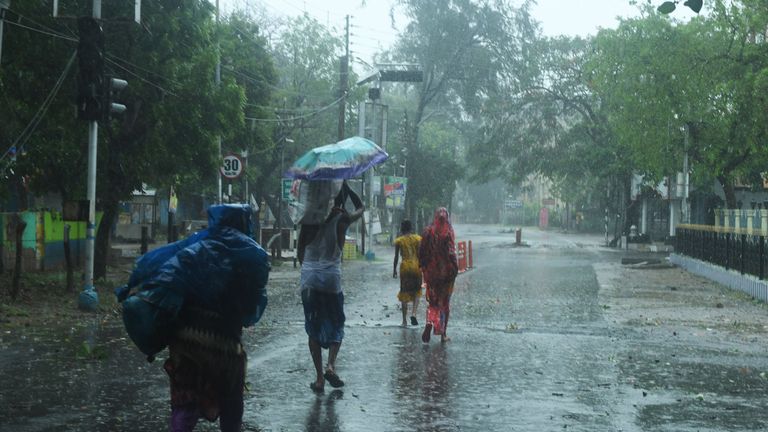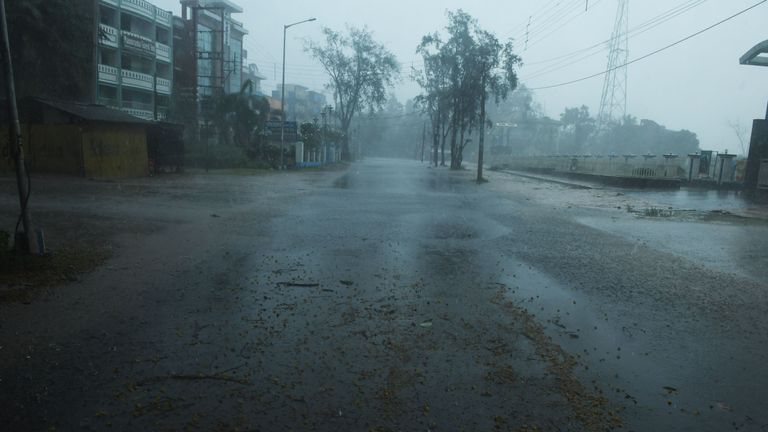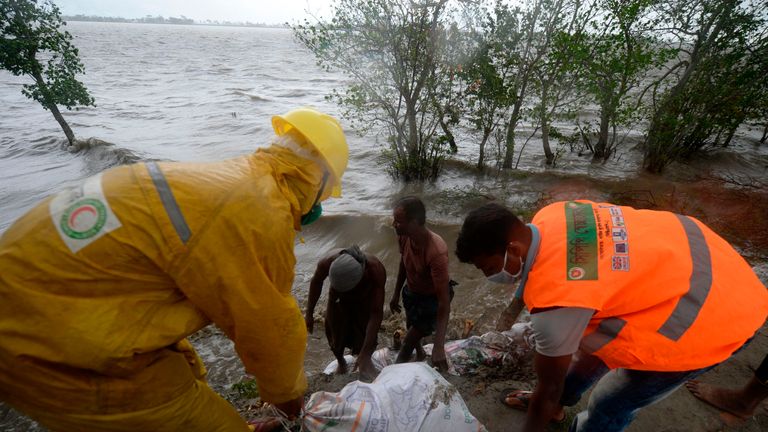Cyclone Amphan could be the result of falling pollution, climate scientist claims
The cyclone is due to hit parts of India and Bangladesh and could be as powerful as a category five hurricane.
Wednesday 20 May 2020 18:11, UK
A super cyclone that has hit Bangladesh and parts of India may have been whipped up partly as a result of reduced levels of air pollution from the coronavirus lockdown, according to a climate scientist.
Cyclone Amphan was ranked as the strongest ever tropical storm in the Bay of Bengal earlier this week with wind speeds of 270mph, but the vortex has eased to 120mph as the weather system made landfall at the border between the two countries.
Professor Vinoj Velu, of the Indian Institute of Technology, Bhubaneswar, said the economic shut down across South Asia had significantly reduced sooty particles in the atmosphere, allowing more of the sun's energy to reach the sea.
He said: "The global warming effect, which tends to increase the strength of cyclones, is now amplified due to this human-induced lockdown effect.
"This may be the reason why Amphan has strengthened into a super cyclone, the second one only to the 1999 super cyclone."
The wind speed in cyclones is largely determined by the temperature of the sea.
Monitoring buoys in the Bay of Bengal show the water reached a record high of 34C during the first two weeks of May.
Dr Roxy Mathew Koll, a lead author of the recent Intergovernmental Panel on Climate Change report on the oceans, said the rising temperature was part of a long-term trend.
"We have never seen such high values until now," he said.
"These high temperatures can supercharge cyclones since they primarily draw their energy from evaporation at the ocean surface."
Unusually warm water also drives rapid intensification of tropical storms.
In just 24 hours the wind speed of Cyclone Amphan increased from just 50mph to more than 130mph.
Indian meteorologists have warned that the V-shape of the Bay has funnelled a seawater storm surge of between 3 and 5 metres, which will submerge villages several miles inland.
The coast is low-lying and already vulnerable to flooding because the sea level has risen by more than 23cm in recent decades.
At least two million people have been evacuated from coastal villages in Bangladesh. Amphan is expected to continue north east into Bhutan in the coming days.
The Odisha cyclone in October 1999 killed almost 10,000 people.







